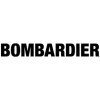Filter interviews by
Falcor Engineering & Contracting Services HSE Officer Interview Questions and Answers
Falcor Engineering & Contracting Services HSE Officer Interview Experiences
1 interview found
I applied via Referral and was interviewed in Sep 2020. There were 3 interview rounds.
Interview Questionnaire
4 Questions
- Q1. PTW
- Q2. JSA
- Q3. HOT WORK
- Q4. HSE JOB RESPONSIBILITIES
Interview Preparation Tips
Top trending discussions






Interview questions from similar companies

I applied via Other and was interviewed in May 2021. There was 1 interview round.
Interview Preparation Tips

Interview Questionnaire
1 Question
- Q1. What skills increase and promote in lofey
Interview Preparation Tips

I applied via Referral and was interviewed before Jan 2024. There was 1 interview round.
(2 Questions)
- Q1. Related to TRIFR
- Q2. MHE

I applied via Recruitment Consultant and was interviewed before Dec 2020. There were 5 interview rounds.
Interview Questionnaire
1 Question
- Q1. How many years experience in oil&gas, what are the activities and what policy in the company.
Interview Preparation Tips

I applied via Recruitment Consultant and was interviewed in Jan 2021. There were 3 interview rounds.
Interview Questionnaire
1 Question
- Q1. Shutdown related oil and gas basic and own decision making questions like confined space, lifting, permit to work, hot work.
Interview Preparation Tips

I applied via Recruitment Consultant and was interviewed in Oct 2019. There was 1 interview round.
Interview Questionnaire
22 Questions
- Q1. 1) tell me about your self,
- Q2. 2) As a safety officer your Responsibility,
- Ans.
As a safety officer, my responsibility is to ensure the workplace is safe and compliant with health and safety regulations.
Conduct regular safety inspections and audits
Develop and implement safety policies and procedures
Provide safety training to employees
Investigate accidents and incidents to determine root causes
Ensure compliance with health and safety regulations
Maintain safety records and documentation
- Q3. 3) what is Combustable material
- Ans.
Combustible material is any substance that can catch fire and burn easily.
Examples include wood, paper, gasoline, and propane.
Combustible materials are often classified by their flash point, which is the temperature at which they will ignite.
It is important to properly store and handle combustible materials to prevent fires and explosions.
Combustible materials are often found in industrial settings, construction sites,...
- Q4. Hierarchy of Hazard controls
- Ans.
Hierarchy of Hazard controls refers to a systematic approach to eliminate or minimize workplace hazards.
Hierarchy of Hazard controls is a framework used to prioritize and implement measures to control workplace hazards.
The hierarchy consists of five levels: elimination, substitution, engineering controls, administrative controls, and personal protective equipment (PPE).
Elimination involves completely removing the hazar...
- Q5. What are the steps in the hierarchy of control
- Ans.
The hierarchy of control is a systematic approach to managing workplace hazards.
Elimination: Completely remove the hazard from the workplace.
Substitution: Replace the hazard with a less hazardous alternative.
Engineering controls: Modify the workplace or equipment to reduce the risk.
Administrative controls: Implement policies, procedures, and training to minimize exposure.
Personal protective equipment (PPE): Provide pro...
- Q6. Hazard of work at a hight
- Ans.
Working at heights poses significant hazards and risks.
Falls from heights are a major risk and can result in serious injuries or fatalities.
Workers may be exposed to unstable surfaces, leading to slips, trips, and falls.
Falling objects from heights can cause head injuries or other serious harm.
Working at heights often involves working near electrical hazards, increasing the risk of electrocution.
Weather conditions such...
- Q7. What is SWL and colour coding
- Ans.
SWL stands for Safe Working Load and refers to the maximum weight a piece of equipment or structure can safely support. Colour coding is a system of using different colors to identify and differentiate objects or areas based on their specific characteristics or purposes.
SWL is an important concept in occupational health and safety, as it helps ensure that equipment and structures are not overloaded and can operate safe...
- Q8. SWL stand for safe working load.when a load is lifting by carne, following shall be checked for safe lifting. (1) total weight of load including weight of the carne hook, slings and shackles. (2) capicity...
- Q9. What is a near miss/ unsafe act/ Un safe conditions
- Ans.
Near miss is an unplanned event that could have resulted in injury, damage or loss but did not. Unsafe act is an action that increases the risk of injury or damage. Unsafe condition is a situation that increases the risk of injury or damage.
Near miss is an event that could have resulted in harm but did not
Unsafe act is an action that increases the risk of harm
Unsafe condition is a situation that increases the risk of h...
- Q10. Nearmiss : any incident that could have caused an injury, damage to property or production loss is circumstances were slightly different. / unsafe act : An action of a person that can lead to an injury, ...
- Ans.
Nearmiss, unsafe act, and unsafe condition are all potential hazards that can lead to injury, damage to property, or production loss.
Nearmiss refers to an incident that could have caused harm if circumstances were slightly different.
Unsafe act is an action by a person that can lead to harm.
Unsafe condition is a situation that may lead to harm.
Examples of nearmiss include a worker almost falling from a height, a machine...
- Q11. Why is near miss reporting important
- Q12. What is risk / hazard
- Ans.
Risk/hazard refers to potential dangers or threats that can cause harm or damage to people, property, or the environment.
Risk is the probability of an event occurring and the potential consequences associated with it.
Hazard is a potential source of harm or danger that can cause an adverse effect.
Risks and hazards can be physical, chemical, biological, ergonomic, or psychosocial in nature.
Examples of risks/hazards inclu...
- Q13. Risk : risk is defined as the product of the probability of a hazard resulting in an adverse event, times the severity of the event. Risk= likelihood of occurrence × severity if incident occurred. / HAZA...
- Ans.
Risk is the product of the probability of a hazard resulting in an adverse event, times the severity of the event.
Risk is calculated by multiplying the likelihood of an adverse event occurring by the severity of the event.
Hazards are anything that has the potential to cause harm.
If there is no hazard, there is no risk.
Examples of hazards include chemicals, machinery, and environmental factors.
As an HSE Officer, it is i...
- Q14. What is MSDS
- Ans.
MSDS stands for Material Safety Data Sheet.
MSDS provides detailed information about the potential hazards of a chemical substance.
It includes information about the physical and chemical properties of the substance.
MSDS also provides instructions for safe handling, storage, and disposal of the substance.
It outlines the necessary personal protective equipment (PPE) to be used when working with the substance.
Examples of i...
- Q15. MSDS is a document that gives essential information regarding a chemical products
- Q16. Loog out tag out
- Q17. Positive isolation ( inserting Blinding ) physical Disconnection close valves, double block and bleeds, electrical isolation :- opening circuit breakers, disconnection cable, removing fuses, etc./ Radi...
- Q18. What is pyrophoric material
- Ans.
Pyrophoric material is a substance that ignites spontaneously in air at or below room temperature.
Pyrophoric materials are highly reactive and can ignite without an external ignition source.
They can ignite upon contact with air, moisture, or other substances.
Examples of pyrophoric materials include white phosphorus, alkali metals, and certain organometallic compounds.
- Q19. What is confined space, scaffolding, Hot or naked flame, Excavation, sand blasting, crane operation, all following hazard and all following safety measures
- Ans.
Confined space, scaffolding, hot or naked flame, excavation, sand blasting, crane operation are all hazardous activities that require safety measures.
Confined space: Proper ventilation, gas detection, and rescue plan.
Scaffolding: Proper assembly, inspection, and use of personal protective equipment.
Hot or naked flame: Proper handling, storage, and use of fire extinguishers.
Excavation: Proper shoring, sloping, and trenc...
- Q20. What is C.S.I.D.L.H
- Ans.
C.S.I.D.L.H stands for Control of Substances Hazardous to Health. It is a set of regulations that aim to protect workers from exposure to hazardous substances.
C.S.I.D.L.H is a set of regulations in the field of occupational health and safety.
It requires employers to assess and control the risks associated with hazardous substances in the workplace.
The regulations cover a wide range of substances, including chemicals, f...
- Q21. What is incident
- Ans.
An incident refers to an unexpected event or occurrence that disrupts normal operations and may result in injury, damage, or loss.
An incident can include accidents, near misses, injuries, illnesses, property damage, or environmental incidents.
It is important to investigate and analyze incidents to identify the root causes and implement corrective actions to prevent future occurrences.
Incident reporting and documentatio...
- Q22. What is accident
- Ans.
An accident is an unexpected and unplanned event that results in harm, injury, damage, or loss.
Accidents can occur in various settings such as workplaces, roads, homes, and public spaces.
They can be caused by human error, equipment failure, environmental factors, or a combination of these.
Accidents can range from minor incidents like slips and falls to major disasters like explosions or collisions.
Prevention measures s...
Interview Preparation Tips
First important is your cv, how you prepared for clinte,
Most of the interview questions are asked by your cv refrence.
Skills evaluated in this interview
HSE Officer Interview Questions & Answers
Falcor Engineering & Contracting Servicesposted on 17 Mar 2021
I applied via Referral and was interviewed in Sep 2020. There were 3 interview rounds.
Interview Questionnaire
4 Questions
- Q1. PTW
- Q2. JSA
- Q3. HOT WORK
- Q4. HSE JOB RESPONSIBILITIES
Interview Preparation Tips

I applied via Campus Placement and was interviewed before Feb 2021. There was 1 interview round.
(1 Question)
- Q1. Basic questions related to fire and safety
Interview Preparation Tips

I appeared for an interview before Jul 2016.
Interview Questionnaire
3 Questions
- Q1. What is excavation ?
- Ans.
Excavation is the process of removing earth or other materials from a site to create a hole or cavity.
Excavation is commonly done for construction purposes, such as building foundations or underground utilities.
It involves the use of heavy machinery, such as excavators or backhoes, to dig and remove the soil or rock.
Excavation may also be done for archaeological purposes to uncover artifacts or historical remains.
Safet...
- Q2. What is cretical lifting ?
- Ans.
Critical lifting refers to the process of lifting heavy objects or loads that require special attention and precautions to ensure safety.
Critical lifting involves assessing the weight and dimensions of the load to determine the appropriate lifting equipment and techniques.
It requires proper planning and coordination to minimize the risk of accidents and injuries.
Factors such as the stability of the load, the condition ...
- Q3. What is JHA
- Ans.
JHA stands for Job Hazard Analysis. It is a systematic process used to identify and evaluate potential hazards in the workplace.
JHA is used to assess the risks associated with specific job tasks or activities.
It involves breaking down the job into steps, identifying potential hazards, and determining control measures to mitigate those hazards.
JHA helps in preventing accidents, injuries, and illnesses by proactively add...
Interview Preparation Tips
Experience: Employer contact me on my mobile no. and called for face to face interview in Mumbai.
Tips: Be positive and give specific answers to questions. Don't get confuse to interviewer. Because he would be more intelligent then you.
Round: Technical Interview
Experience: I was done good
Tips: Read your notes and prepare yourself like a complete person for the above job.
Tell us how to improve this page.
Interview Questions for Popular Designations
Interview Questions from Similar Companies

Falcor Engineering & Contracting Services HSE Officer Reviews and Ratings
based on 1 review
Rating in categories
|
Senior Electrical Engineer
4
salaries
| ₹21.5 L/yr - ₹50 L/yr |
|
HSE Engineer
4
salaries
| ₹12 L/yr - ₹24 L/yr |
|
HSE Officer
4
salaries
| ₹8.4 L/yr - ₹15 L/yr |
|
Safety Officer
3
salaries
| ₹10.5 L/yr - ₹14 L/yr |
|
Instrument & Control Engineer
3
salaries
| ₹22.8 L/yr - ₹22.8 L/yr |

Bombardier Transportation

Linfox Logistics

Maharashtra State Road Transport Corporation

Delhi Integrated Multi Modal Transit System
- Home >
- Interviews >
- Falcor Engineering & Contracting Services Interview Questions >
- Falcor Engineering & Contracting Services HSE Officer Interview Questions










